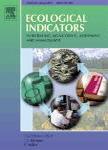版权所有:内蒙古大学图书馆 技术提供:维普资讯• 智图
内蒙古自治区呼和浩特市赛罕区大学西街235号 邮编: 010021

作者机构:HUST Sch Environm Sci & Engn Wuhan Peoples R China
出 版 物:《ECOLOGICAL INDICATORS》 (生态指数)
年 卷 期:2017年第73卷
页 面:637-652页
核心收录:
学科分类:0710[理学-生物学] 0830[工学-环境科学与工程(可授工学、理学、农学学位)] 07[理学] 09[农学] 0713[理学-生态学]
基 金:National Science Foundation of China
主 题:GDP PM2.5 Atmospheric environmental capacity Atmospheric environmental carrying capacity System dynamics Wuhan city
摘 要:China faces a contradictory period of economic development and environmental protection, with it being essential to control total emissions within the limit of atmospheric environmental capacity (AEC) by promoting atmospheric environmental carrying capacity (AECC). This implies that well-calculated AEC and AECC values are the key macro-criteria for improving environmental quality and supporting the challenging coordinated development of economy and environment. When considering compound air pollution characterised as fine particulate matter (PM2.5), conventional methods are not capable of calculating AEC and AECC, but the system dynamics (SD) method retains the advantage of simplicity in resolving complex problems. In the present study, we first describe the background and definitions of AEC and AECC, which are different from Western concepts, and their dialectical relationships. Then, with the statistical data from Wuhan city in 2014, we establish an economy-energy-atmospheric environment dynamic model using the SD method, which does not need to simulate the complicated physicochemical processes of atmospheric transmission and diffusion. Instead, it uses the pollutants proportionality factors and conversion rates to establish quantitative connections among different types of variables. Finally, we simulate the dynamic trends of gross domestic production (GDP), PM2.5, and six air pollutant emissions between 2015 and 2030 in four different scenaribs and calculate the results of AEC and AECC constrained by GDP and PM2.5. (C) 2016 Elsevier Ltd. All rights reserved.